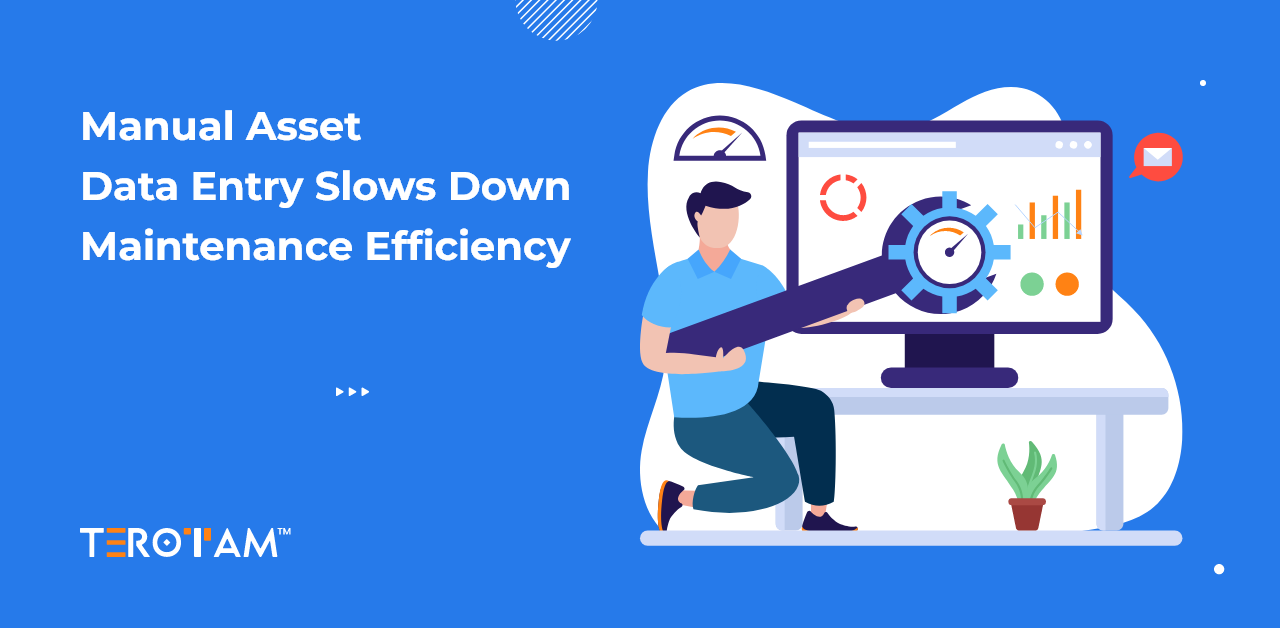As the first frost of winter creeps across the landscape, many property owners, facility managers, and corporate decision-makers are left scrambling to address what should have been planned weeks ago. Winter doesn’t wait for readiness—it arrives with freezing temperatures, snowstorms, ice dams, and burst pipes that can cripple operations, damage assets, and cost thousands—sometimes millions—in preventable losses.
Whether you manage a single commercial building, a multi-site industrial campus, a healthcare facility, or a sprawling corporate headquarters, the stakes are high. A single frozen pipe can shut down production lines. A failed HVAC system can endanger employee safety. Unplowed walkways can lead to liability claims. And neglected roofs? They can collapse under snow load.
This comprehensive guide will walk you through a detailed, actionable checklist of strategies to make your property truly winter-ready.
Why Most Companies Fail at Winterization—And How to Avoid It
Before diving into the “how,” let’s address the “why.”
According to the Insurance Institute for Business & Home Safety (IBHS), water damage from frozen and burst pipes is the second most costly type of property damage in the U.S., averaging $11,000 per claim—and that’s just the average. In industrial or data center environments, a single pipe rupture can lead to downtime costs exceeding $500,000 per hour.
Moreover, OSHA reports that slip-and-fall incidents increase by 40% during winter months, resulting in higher workers’ compensation claims and potential litigation. Unplanned outages from HVAC failure can disrupt temperature-sensitive operations in pharmaceutical, food processing, or data center facilities.
Winterization is not an expense—it’s an investment in resilience.
Phase 1: Pre-Winter Assessment & Planning (October–Early November)
1. Conduct a Comprehensive Facility Audit
Who should lead: Facilities Manager + Maintenance Supervisor
Tools needed: Facility management software (CMMS), thermal imaging camera, inspection checklist
- Inspect all exterior envelopes: Check for cracks in masonry, deteriorated caulking around windows and doors, and gaps in insulation. Even a 1/8” gap can allow cold air infiltration, increasing heating costs by up to 20%.
- Evaluate roofing systems: Look for loose shingles, damaged flashing, clogged drains, and signs of ponding water. Snow accumulation combined with ice dams can lead to structural failure. A professional roof inspection is non-negotiable before December 1.
- Map utility access points: Identify all exterior water shutoff valves, boiler rooms, electrical panels, and emergency generator locations. Ensure they are clearly labeled and accessible—even under snow.
Pro Tip: Use your CMMS to create a digital winterization task list with assigned owners, due dates, and completion verification (photos recommended). This creates accountability and audit trails.
2. Review Insurance & Risk Management Policies
Who should lead: Risk Manager / CEO / CFO
- Confirm your property insurance covers:
- Water damage from frozen pipes (many policies require proof of “reasonable care”)
- Business interruption due to HVAC failure
- Slip-and-fall liability on premises
- Verify your policy includes coverage for “freeze damage” and whether it requires documented preventative maintenance.
- Consider adding equipment breakdown coverage for boilers, chillers, and critical HVAC units.
Executive Insight: A single major winter incident can cost 3–5x more than the annual cost of preventative maintenance. The ROI on winterization is rarely even close to 1:1—it’s often 10:1 or higher.
Phase 2: Critical Systems Winterization (Mid-November)
3. Protect Plumbing & Water Systems
Who should lead: Maintenance Team + HVAC Technicians
Indoor Systems:
- Set all thermostats to a minimum of 55°F (13°C), even in unoccupied areas. Never drop below 50°F.
- Insulate all exposed pipes in basements, crawl spaces, attics, and exterior walls with foam sleeves or heat tape.
- Drain and shut off water to outdoor faucets, sprinkler systems, and irrigation lines. Use air compressors to blow out lines if you have a commercial irrigation system.
- Install automatic freeze-stat thermostats in vulnerable zones (e.g., server rooms with exterior walls, loading docks).
Outdoor & Underground Systems:
- Insulate or bury water lines below the frost line (varies by region—check local building codes).
- If you have a fire sprinkler system, ensure it’s a dry-pipe or pre-action system—wet systems are vulnerable to freezing. Schedule a professional inspection if unsure.
- Disconnect and store garden hoses. Close interior valves supplying exterior spigots.
Case Study: A mid-sized manufacturing plant in Wisconsin saved $287,000 in downtime and repair costs after installing automated pipe-heating systems on 14 critical water lines following a $42,000 investment. Payback: 3 weeks.
4. HVAC System Optimization
Who should lead: HVAC Contractor + Facilities Manager
- Change air filters (use MERV 11 or higher for better particulate capture during high indoor air use).
- Clean and inspect boilers, furnaces, and heat exchangers. Schedule professional tune-ups—don’t wait for failure.
- Test all thermostats and zone controls. Calibrate if needed.
- Inspect and clean exhaust vents, flues, and chimneys. Blockages can lead to dangerous carbon monoxide buildup.
- Ensure backup generators (if applicable) are fueled, tested, and connected to automatic transfer switches.
CEO Note: If your facility has critical environmental controls (e.g., labs, server rooms, clean rooms), install dual redundant HVAC systems with remote monitoring. A $10,000 investment in redundancy can prevent $2M in lost inventory or data.
5. Roof & Drainage Integrity
Who should lead: Roofing Contractor + Grounds Crew
- Clear all gutters, downspouts, and roof drains of leaves, debris, and ice dams. Frozen drains cause water to back up under shingles, leading to interior leaks and structural rot.
- Install roof de-icing cables along eaves and in valleys if snow load is historically high.
- Remove heavy snow buildup promptly (safely). Use a roof rake from the ground—never climb on a snowy roof.
- Check for ice dams: If you see icicles longer than 6 inches, you have a problem. They indicate heat escaping from the attic, melting snow, which then refreezes at the edge.
Warning: A single 1-inch layer of ice on a flat roof adds 5.2 pounds per square foot. A 10,000 sq. ft. roof can carry over 50 tons of ice load. Structural failure is real.
6. Exterior & Site Safety
Who should lead: Grounds & Security Teams
- Snow removal plan: Define response thresholds (e.g., 2” accumulation triggers plowing). Ensure equipment (plows, salt spreaders, snow blowers) is serviced and fueled. Stockpile salt, sand, and eco-friendly de-icers.
- Lighting audit: Replace burnt-out bulbs in parking lots, walkways, and entrances. Poor lighting increases accident risk and liability.
- Mark hazards: Clearly delineate icy patches, uneven pavement, and buried sprinkler heads with reflective markers.
- Check emergency exits: Ensure all egress paths are unobstructed and accessible. Test exit signs and battery backups.
Liability Alert: Under OSHA’s General Duty Clause, employers are required to provide a workplace free from recognized hazards. Ice-covered walkways are a textbook violation.
Phase 3: Technology & Monitoring Upgrades (Ongoing)
7. Implement Smart Building Technology
Who should lead: IT / Facilities / CTO
Modern facilities don’t rely on manual checks. Invest in:
- IoT sensors on pipes, HVAC units, and ambient temperatures (e.g., Sensaphone, Control4, Siemens Desigo). These send real-time alerts via text/email if temps drop below 45°F.
- Remote HVAC monitoring platforms that allow adjustments from a smartphone—critical if you manage multiple locations.
- Automated alarm systems linked to your security team or third-party monitoring service.
ROI Example: A healthcare network in Minnesota reduced winter-related facility incidents by 78% after deploying 150 temperature sensors across 12 clinics. Downtime dropped from 14 hours per incident to under 2.
8. Prepare for Power Outages
Who should lead: Facilities Manager + Safety Officer
- Test backup generators monthly under load. Change oil and filters quarterly.
- Ensure fuel tanks are full and treated with stabilizer (diesel fuel gels in cold weather).
- Stock emergency lighting, battery-powered radios, and portable heaters (only UL-listed, non-combustible models).
- If you’re in a high-risk area, consider fuel delivery contracts for generator supply during extended storms.
Phase 4: People, Process & Preparedness
9. Train Your Team & Document Procedures
Who should lead: HR / Facilities Director
- Conduct a Winter Emergency Response Drill with your maintenance and security teams.
- Create and distribute a Winter Operations Playbook that includes:
- Contact list for plumbers, roofers, snow removal vendors
- Step-by-step shutdown procedures for non-essential systems
- Emergency contact hierarchy (who calls whom if the boiler fails at 2 a.m.?)
- Assign “Winter Champions” in each building to conduct daily visual checks.
Pro Tip: Include winterization tasks in your annual performance reviews for maintenance staff. Accountability drives compliance.
10. Communicate with Stakeholders
Who should lead: CEO / Communications Lead
- Inform employees about:
- Expected delays due to weather
- Remote work policies during extreme events
- Dress codes for outdoor workers
- Notify tenants, clients, or partners if your facility may experience disruptions.
- Publicly display your snow removal schedule on your website or app. Transparency builds trust.
The Cost of Ignoring Property Winterization: A Quick Reality Check
| INCIDENT | ESTIMATED COST | PREVENTABLE |
| Burst pipe in warehouse | $25,000–$150,000+ | ✅ Yes |
| Ice dam causing ceiling collapse | $50,000–$300,000 | ✅ Yes |
| Slip-and-fall lawsuit | $50,000–$1M+ | ✅ Yes |
| HVAC failure in data center (per hour) | $200,000–$500,000 | ✅ Yes |
| Business interruption (3-day storm) | $100,000–$2M+ | ✅ Yes |
| Average cost of winterization prep | $5,000–$25,000 | — |
The math is undeniable. Investing $20,000 upfront can save you $500,000+ in losses.
Final Checklist: Your Winter-Ready Scorecard
☐ All exterior water lines drained and valves closed
☐ Pipes insulated or heat-taped in vulnerable areas
☐ Thermostats set to 55°F minimum in all zones
☐ HVAC system professionally serviced and filters changed
☐ Roof inspected and drains cleared
☐ Snow removal equipment serviced and stocked
☐ Emergency generator tested under load
☐ Backup power and lighting available
☐ Slip hazards marked and de-icer stocked
☐ Temperature sensors installed and monitored
☐ Emergency contact list updated and distributed
☐ Staff trained on winter protocols
☐ Insurance policy reviewed for coverage gaps
Summing it up
Winter isn’t waiting for your to-do list to get done. It’s already knocking — with freezing pipes, icy walkways, and power outages that don’t care if you’re “busy.” This isn’t about checking boxes. It’s about protecting your people, your operations, and your bottom line before the first snowflake sticks.
If you’ve been putting off winter prep because “it’ll be fine,” ask yourself: What’s the real cost of “fine”? A single burst pipe can shut down your facility for days. A slip-and-fall lawsuit can cost more than your entire maintenance budget. Don’t wait for disaster to be your teacher.
Ready to make sure your property doesn’t just survive winter — but thrives through it? – Email us at contact@terotam.com for a free Winter-Ready Assessment Checklist — tailored to your facility.








